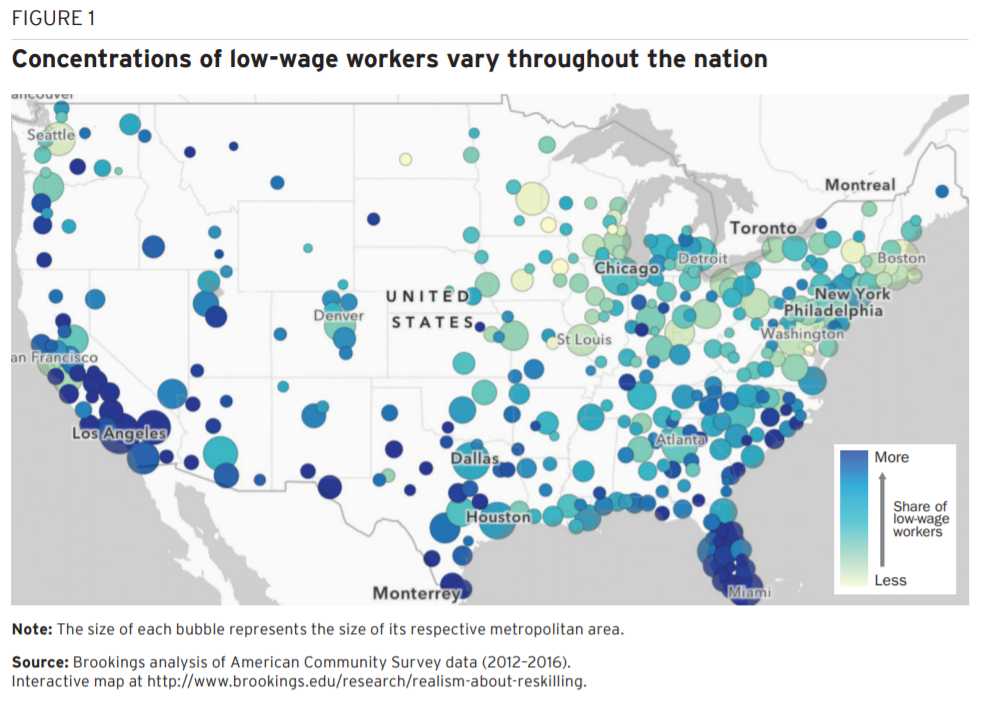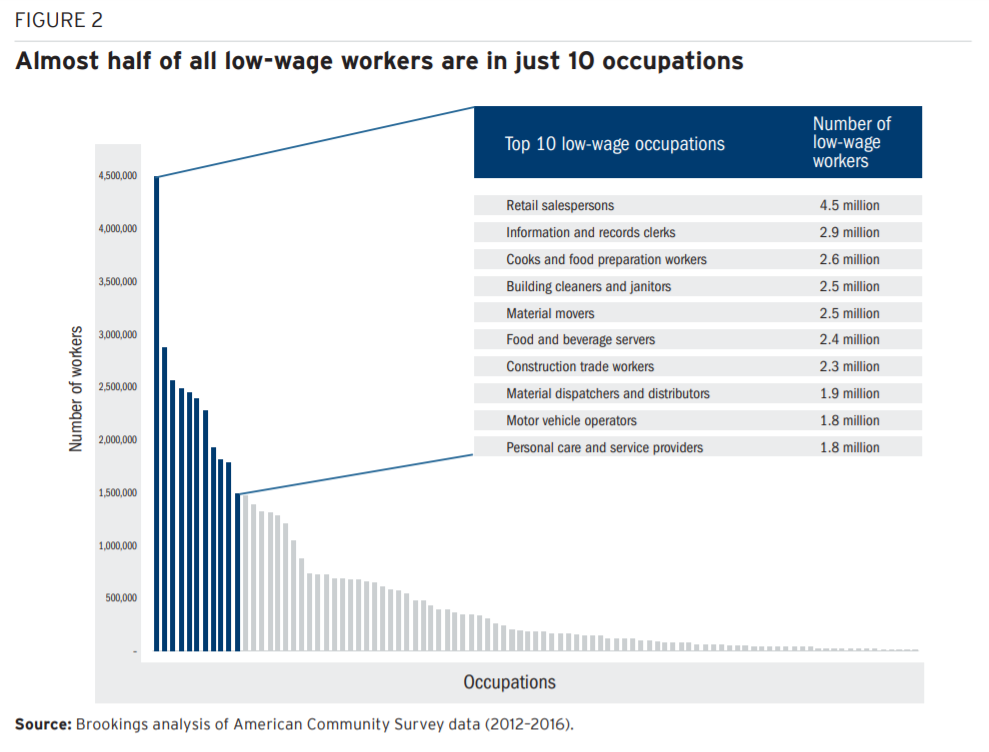
44 percent of all U.S. workers ages 18–64 are low-wage workers. That’s more than twice the number of people in the 10 most populous cities combined. What counts as “low wage’ varies by place. Low-wage work spans race, education,age, and geography. Historically marginalized groups are most at risk.
About half of low-wage workers are white, a quarter are Hispanic, 15 percent are Black, and 5 percent are Asian-American. Women are 19 percent more likely than men to be low- wage workers. Small cities in the southern and western parts of the U.S. are home to some of the highest concentrations of workers. Despite varying concentrations, low- Wage workers are distributed throughout the nation.
Hosting high-wage industries does not guarantee a lower percentage of low-wage workers. Cities with higher proportions oflow- wage workers tend to have a younger, less educated workforce. City leaders can cultivate the capabilities needed to host (and attract) complex industries. But urban policymakers must balance the need to host high- Wage industries with efforts to support low- Wage workers.

2012auto20